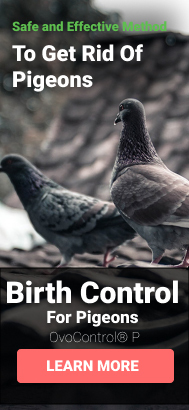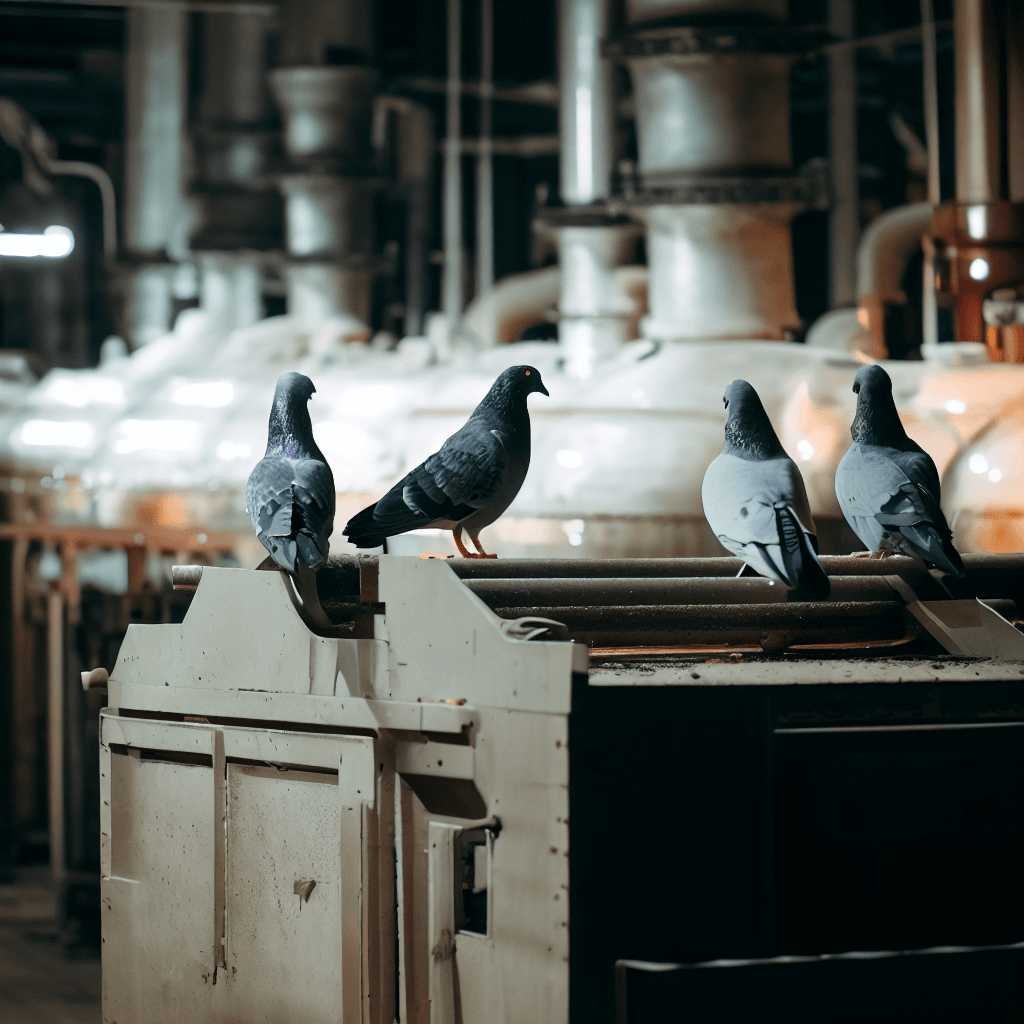Glass Manufacturing Bird Control: Helpful Methods and Tips
Written by Erick Wolf
In the world of glass manufacturing, birds can often be an unexpected nuisance. Glass manufacturing bird control is a critical aspect of maintaining an efficient, clean, and safe facility. The presence of birds can lead to multiple problems, making bird control an indispensable part of the facility's management plan.
In this article, we’ll take an in-depth look at bird control for glass manufacturing, including discussing why it’s important and identifying some of the most popular bird control methods today.
Importance of Bird Control in Glass Manufacturing
Glass manufacturing bird control is critical because birds pose a significant risk to facilities, impacting operations and profitability in several ways.
Health Hazards
Birds, specifically pigeons, are known to carry over 60 diseases that can be transmitted to humans, including bacterial, viral, and fungal diseases such as:
Salmonellosis
Psittacosis
Histoplasmosis
Bird droppings, feathers, and nesting materials can become a breeding ground for these pathogens. When these substances dry out and become airborne, workers can inhale them, leading to potential health issues. Therefore, effective bird control for glass manufacturing is a crucial preventive health measure.
Safety Hazards
Birds can create significant safety hazards within glass manufacturing facilities. Bird droppings on walkways and working surfaces can create a slippery environment, posing a slipping or tripping hazard for workers.
Also, birds can disrupt visibility by flying around the facility, posing a threat to workers in high places or operating machinery. Bird nests can cause fire hazards if built near electrical equipment or heat sources.
Ensuring a bird-free environment is vital to maintaining a safe working environment.
Machinery and Equipment Damage
Bird droppings contain uric acid, which is highly corrosive and can cause substantial damage to machinery and equipment over time. This damage can lead to costly repairs or replacements if not addressed promptly.
Nesting materials can also get into machinery, causing malfunctions or breakdowns. As such, bird control is essential to preserving the integrity of machinery and equipment in a glass manufacturing facility.
Disruption of Production Schedules and Delays
Birds nesting and flocking in a facility can cause significant disruptions to production schedules. Their presence might necessitate frequent stoppages for cleaning, and time spent on repairing damage caused by birds can lead to significant delays.
In a highly competitive industry like glass manufacturing, where timely production is critical, these delays can have serious financial implications. Therefore, glass manufacturing bird control is integral to maintaining efficient production schedules.
Product Contamination
Bird droppings and feathers can contaminate the glass products, compromising their quality and safety. Contaminated products not only lead to financial losses due to waste but also damage the reputation of the company. Therefore, effective bird control is crucial to ensure the production of high-quality, uncontaminated products.
Increased Maintenance Costs
The presence of birds in a facility increases maintenance costs due to the need for regular cleaning, repairs, and preventative measures. Cleaning bird droppings and feathers is a time-consuming and costly task.
In addition, the cost of repairing or replacing equipment damaged by birds can quickly add up. Implementing bird control measures can help to reduce these additional maintenance costs.
Potential Fines and Penalties
Failure to control birds can lead to potential fines and penalties from regulatory bodies such as the Occupational Safety and Health Administration (OSHA) and the Environmental Protection Agency (EPA).
These bodies enforce regulations related to health and safety and environmental protection, which include maintaining a bird-free work environment. Thus, bird control for glass manufacturing is not just a matter of convenience or cost savings but also a legal obligation.
Birds are attracted to glass manufacturing facilities due to the warmth, shelter, and potential food sources they offer. Therefore, effective bird control methods are crucial for these facilities.
Proven Glass Manufacturing Bird Control Methods
Several bird control methods have been proven effective in glass manufacturing settings. These methods vary in their approach and effectiveness.
Bird Birth Control
Bird birth control, such as OvoControl, is an innovative and humane way to manage bird populations by reducing their reproduction ability. This method is especially effective in the long term, as it naturally and gradually decreases the bird population in and around the facility.
Bird Netting
Bird netting is a physical barrier preventing birds from entering certain areas. While it's effective in blocking access to nesting or roosting sites, its success heavily relies on the correct installation and regular maintenance to ensure no gaps or damages that birds could exploit.
Bird Deterrents
Bird deterrents, such as scare devices, ultrasonic devices, and visual repellents, can effectively discourage birds from settling in the facility. However, the effectiveness of these devices may decrease over time as birds can eventually become accustomed to them, requiring a rotation or combination of deterrents for continuous efficacy.
Bird Spikes and Wires
Bird spikes and wires make landing and nesting uncomfortable for birds, deterring their presence. While they are generally effective, the aesthetic impact and the potential need for extensive coverage can make them less suitable for all areas of a facility.
Bird Gel
Bird gel makes surfaces sticky and uncomfortable for birds to land, deterring them from settling. This method is effective when applied correctly, but it requires regular reapplication and maintenance as environmental factors can dilute or wear off the gel over time.
Why Use OvoControl for Glass Manufacturing Bird Control?
OvoControl is a unique bird birth control method that offers an effective, humane, and sustainable solution for bird control in glass manufacturing facilities. It manages bird populations by interfering with their ability to reproduce, gradually reducing the bird population without harming them. This non-intrusive method requires minimal maintenance, making it an ideal solution for large facilities.
Final Thoughts
Bird control in glass manufacturing facilities is essential for maintaining a safe, efficient, and cost-effective operation. While several methods can be employed, OvoControl offers a unique and humane approach to managing bird populations.
By incorporating OvoControl into a comprehensive bird control strategy, glass manufacturing facilities can significantly reduce the impact of birds on their operations, ensuring a safer and more productive environment.





